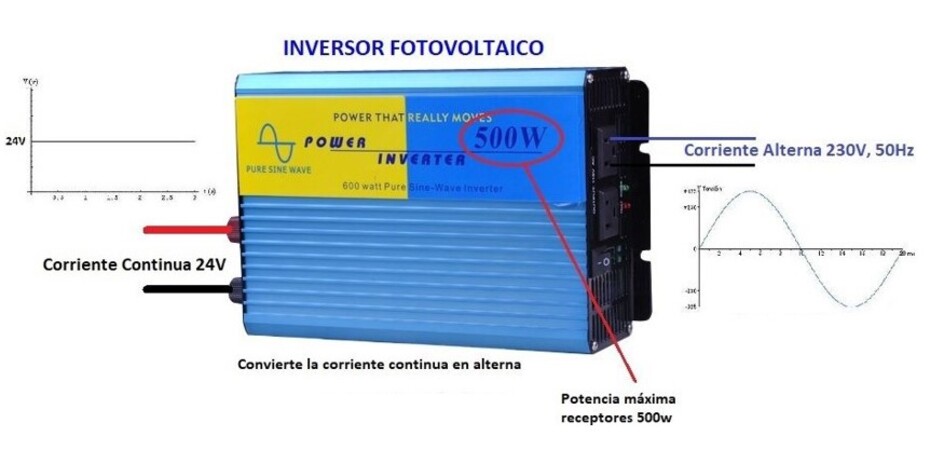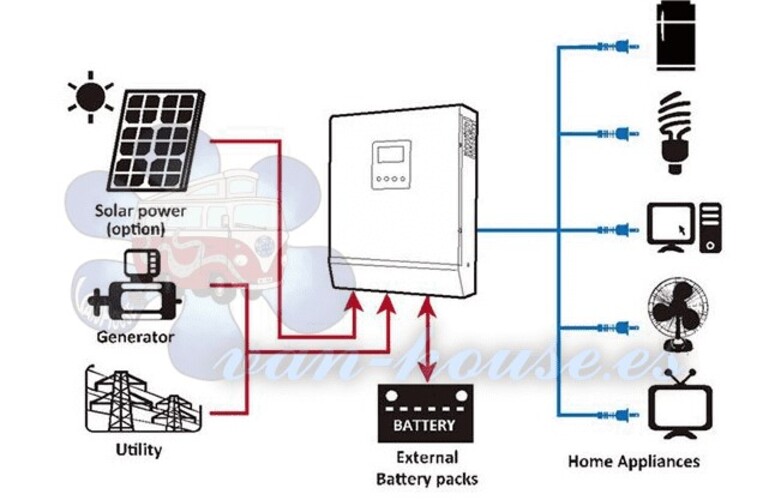Energía Solar
The Solar Inverter: What You Need to Know Before Buying It. Part 3
We continue with this series of posts, providing you with the best advice on The solar inverter: what you need to know before buying it.
It’s important to understand that since this equipment can be quite expensive, it’s crucial to acquire the one that suits your needs. Here, we provide you with the necessary information. Let’s take a look.
What features should you be aware of when purchasing the solar inverter that suits you best?

Understanding these parameters of the solar inverter will save you a lot of money and time. Both now and in the long run, because you should be aware that you need to purchase your solar inverter with the future in mind.
Power
This refers to the energy that the solar inverter can handle. It has 2 values which are:
Nominal power
It is the output power that the inverter is capable of supplying under normal conditions and for extended periods of time.
This should be at least 20% higher than the total power output of the solar panels combined. So, if your solar panels can provide you with 1000 W at full capacity, then you should purchase an inverter of at least 1200 W.
Peak power or maximum power
It consists of the power that a solar inverter can supply for a very short period of time.
This is only necessary during the starting of appliances like refrigerators, washing machines and others, whose duration is almost always less than 1 second. Typically, it is 200% of the nominal capacity indicated by the solar inverter.
This is a very important factor that you must take into account because if chosen improperly, it can result in permanent damage to the inverter. It can also prevent the load from starting, functioning correctly, and potentially lead to long-term damage.
In our article Nominal and Maximum Power of a DC/AC Inverter: Are They the Same? we explain this point in more detail.
Output voltage
This is the AC voltage delivered by the inverter, and its value must be suitable for the devices it will power. However, for the purpose of purchasing, indicating the operating voltage, such as 230 V, is sufficient.
For more details, we suggest reading the post Example of selecting an inverter based on ac output voltage and power.
Input voltage
Depending on the configuration of the photovoltaic system and the solar panels, this nominal input voltage can be 12, 24, or 48 V. Similarly, it is given as a range, for example, from 11 to 14 Vdc.
In our article Example of selecting a solar inverter based on dc input voltage, you will find the most comprehensive information on this topic.
Weight and size of the solar inverter
Which will determine the location for installation.
Efficiency percentage
It is the ability to convert direct current to alternating current in reference to its losses. This defines how much of the incoming energy is converted into useful energy at the output.
The better the quality of the solar inverter, the closer this value will be to 100%, typically ranging between 90% and 95%. In other words, there is better utilization of the incoming DC energy.
Which type is suitable based on the load to be connected: Solar inverter or conventional inverter?

If your system is of low cost and the loads you’ll be considering are computers, lights, TVs, battery chargers, and other similar equipment. Additionally, if its maximum consumption will be equal to or less than 1000 W, then a conventional inverter will suffice.
However, if your system is of high capacity, exceeding 1000 W. Moreover, if you wish to include loads that involve motors of appliances such as dryers, dishwashers, refrigerators, among others, then a solar inverter is advisable.
We want to emphasize that, due to their importance, the maintenance of solar inverters should be carried out by specialized personnel. If you need to connect it to the grid, ensure that the equipment complies with local regulations; the seller can provide guidance in this regard.
In our upcoming post titled The solar inverter: what you need to know before buying it. Part 4 we will discuss a crucial point, which is the manufacturer’s warranty.
Additionally, we will provide an example to guide you in selecting this equipment appropriately based on the characteristics of the photovoltaic installation.
Before we conclude, we’d like to invite you to visit our website, energydcac, where you will find highly engaging content in our categories related to DC/AC power systems and solar energy.
Image sources
- energydcac.com
- efcsolar.com

